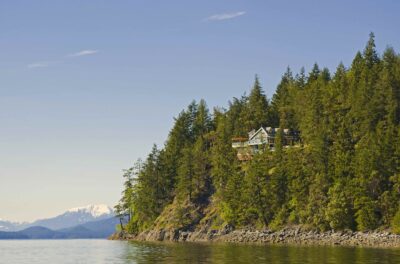I hardly ever go to crypto conferences anymore, but a few weeks ago I decided to attend the Token2049 conference in Singapore. Because Bitcoin has been in its longest bear market ever, my expectations weren’t very high, but what I saw and heard there completely blew me away. Not only was the audience bigger than at any other conference I ever attended, with over 10,000 mostly international participants (not sure what the exact number was, some sources even said up to 20,000 people, but it was a lot more than last year’s 7000 participants), but also the mood was extremely bullish again. Very different from the general mood in North America where polarisation only seems to be getting worse, where the FTX collapse is still on most investors’ minds (especially with Sam Bankman-Fried’s trial), where the SEC keeps on trying to stop a spot Bitcoin ETF, and where even middle class people now have a hard time getting by.
Singapore, UAE or Hong Kong?
Asia is different, and that’s part of the reason why I moved back here last year. As a wealthy Singaporean phrased it to me after a couple of glasses of wine: “We don’t need the US anymore, very soon they will need us”. I agree with that sentiment, the mood is just so different outside North America and Europe. Not only in Singapore by the way, I spent some time in the UAE this year (mostly Abu Dhabi and Qatar) and there it feels exactly the same. But for me personally Singapore and South-East Asia are still much better places to live than the Middle East. Hong Kong also seems to be waking up, but after the long Covid lockdowns there and especially the strong influence of mainland China, it’s not a place I would do much business anymore.
Partying like it’s 2017
The Singapore conference was very well organised, with hardly any lines and sufficient seating everywhere. Even the food was amazing: at conferences I often do my lunch meetings outside the venue, but here I luckily didn’t do that. The main thing were the sessions of course, and all the usual suspects were giving talks and interviews, from the Winklevoss brothers (Gemini) to Changpeng Zhao (CZ, the CEO of Binance), and from Balaji (he wears many hats) to Willy Woo (technical analyst with a lot of followers but also haters). Of course all the Asian exchange CEOs were on stage, but also many international DeFi and Web3 platforms. The parties and side events were amazing, they reminded me of the 2017 bull market. At Arthur Hayes’ pool party on Sentosa the police had to be called because the alcohol ran out while hundreds (!) of people were still waiting to get in, and some had started to scale the walls. I had not seen that in a while at a crypto event!
Everyone is bullish again
The most noticeable thing at the conference was that virtually every keynote and fireside chat was bullish again, the market really seems to get ready for a new bull run. As a Bitcoin maximalist I will focus on Bitcoin in this post, but likely things will be similar for alts. Bitcoin has gone up 60% already since the beginning of the year, but the past months it has been bound inside a relatively small price range. My expectation is that we could be pretty close to a break out to the upside. Most risks seem to be gone, although there is still is a chance that Binance could have cooked its books like FTX did. From personal experience I find CZ a lot smarter than Sam-Bankman Fried, so hopefully the rumours are not true. Or if they are I hope they won’t come out until the market starts rallying again (by then the potential problems will be gone). Too bad Balaji did not ask CZ on stage about the ongoing Binance rumours, but instead kept the conversation very polite. Missed chance or maybe a good thing for crypto? We may find out one day.
The Bitcoin ETF is coming soon
Apart from Binance I literally see only good news on the horizon for Bitcoin. The most important is that we will likely see the first Bitcoin spot ETF in the next 4-6 months. The SEC, and especially its big boss Gary Gensler, have been trying everything they can to slow down a spot ETF, but their options to stop it are running out. Not only did the courts order them to come up with better arguments (if a futures ETF is allowed there is no real reason to try to stop a spot ETF), but even Congress seems to be stepping in now. There is a reason why even elite players such as Blackrock and Templeton have suddenly filed for a Bitcoin spot ETF. My current best guess is that all of the current applicants will get approved before or around January 10, 2024. What will happen then is simple, demand will skyrocket (new money flowing in and money from futures ETFs with high fees will go into spot trading funds) while nobody will be willing to sell. The result will be a price explosion over the weeks and months that follow the launch.
Once that takes place nothing can stop a bull market anymore in my opinion. The next Bitcoin halving will occur by late March, early April next year, which means that the issuance of new BTC will go down by 50%. Just like in past halvings, the price will start going up after the halving. If the Bitcoin ETF should not be allowed by the time the halving will take place, I believe the halving could be the spark that will cause the next real bull market.
Keep in mind that an ETF not only makes it easier to invest in Bitcoin, but it’s also the only way many institutions can invest in it, so a lot of new money will flow into the crypto market. Not only that, but by investing in an ETF institutions (and you!) can borrow against a Bitcoin ETF investment, making it an even more attractive investment.
The effect of the Bitcoin halving
Some people argue that the halving is getting less and less important because the number of BTC that are issued to miners is is already quite small (before the last halving it was 12.5 BTC per 10 minutes, now it’s 6.25 BTC and next year it will be ‘just’ 3.125 BTC). That’s true, but there are 2 reasons why the effect will still be quite profound. First of all the 3.125 BTC could be a lot more in dollar terms than the 6.5 BTC is right now. But second, and more important, most BTC are now being HODLed by Bitcoin investors (HODLing means not selling them, but keeping them in your wallet even if prices go up), which means that the the lower supply still has a big impact on the stock to flow ratio, meaning potentially much higher price.
Another argument that is being used against a price increase after a halving is that according to the efficient market theory (“you can’t make money with publicly available information”) the information should already be reflected in the price. We have seen in past halving that that’s not the case. The main reason for this is in my opinion is that Bitcoin is too volatile for investors to invest in it 6 months before the halving. Even if prices would double after the halving, they believe there is still a risk that Bitcoin could go down so much before the halving that it would wipe out all potential gains. Of course I don’t see that downside risk at all, so I think now would be a very good moment to add to your Bitcoin position.
Will the USD system fail?
From a macro level it’s clear to me that the current financial system can’t survive much longer in its current form. Interest rates have risen too fast and too high and with the 130% government debt to GDP ratio in the US it will be a matter of time until the US will be forced to default on its debt. The US is currently adding $28.5 billion per day to its debts, it added $1 trillion over the past 3 months. That’s completely unsustainable and it’s only getting worse because of the higher interest rates. Of course the institutions see that as well. Bitcoin is a hedge against the current system, even if you just invest a few percent in it. Looking at the performance of Bitcoin in September it’s pretty clear that it’s decoupling from traditional investment categories. While equities and even gold went down significantly in September, BTC kept its value and even went up a bit. Not only that, but BTC’s volatility has come down a lot and is on par with stocks
Bull market incoming
The last quarter of the year has in the past often been the best quarter of the year (a 10X in 2013, a 6X in 2017) and maybe that will happen this year as well. I believe we are pretty close to a break out and that unless a big external event would happen (a China war, a Binance blow up, or a sudden major climate crisis event) a new bull market is imminent. And even if these events would happen it would only be a delay of the bull market.
To what price level the bull market will take us is anyone’s guess, but for sure it’s in 6-figure territory. If Bitcoin would have still been purely trading spot, meaning without a futures market, we would likely already be at the 100K level. Futures add about 20-30% of paper Bitcoin to the market, which is a lot if you realise that most Bitcoin never trade and are either lost or held in long term wallets. Without all the scams and frauds of last year (Celsius, Blockfi, Luna, and of course FTX) we would also be at very different price levels right now. But I believe we are past the stage of frauds and scams now, so once a spot ETF launches the market should start going up fast. Exciting times ahead for Bitcoin!
Disclaimer: As always, these are my personal opinions and not related in any way to any of the companies I am involved with. It’s not investment advice and never invest more than you are willing to lose.


